by Julie Schauer | Oct 3, 2011 | Abstract Expressionism, Baroque Art, Modern Art, Painting Techniques
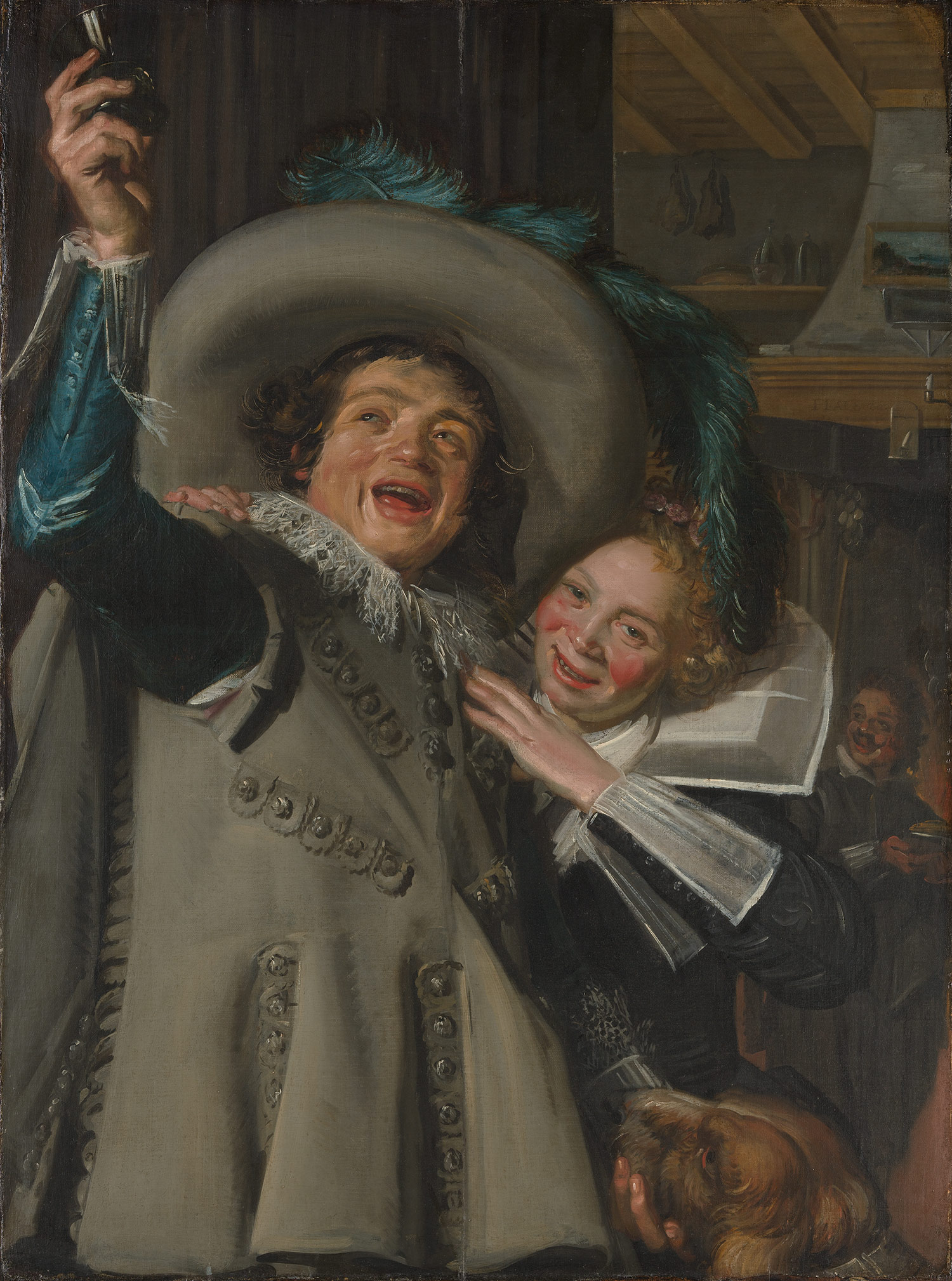
Frans Hals, Young Man and Woman at Inn, 1623 Metropolitan Museum of Art
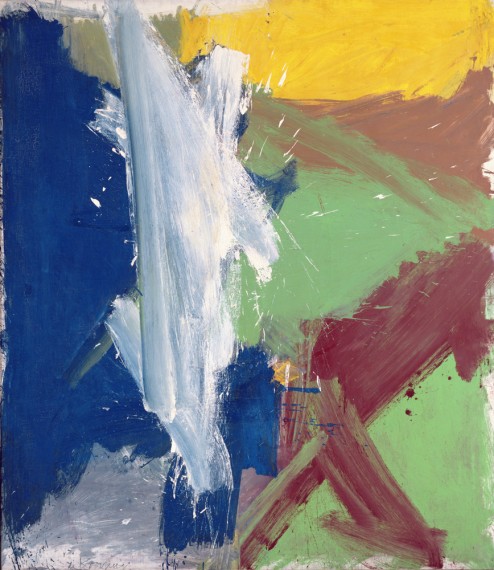 Willem de Kooning, Merritt Parkway, 1959, from the Detroit Institute of Art, Bequest of Hawkins Ferry, is in an exhibition at the Museum of Modern Art (called MoMA), New York
Willem de Kooning, Merritt Parkway, 1959, from the Detroit Institute of Art, Bequest of Hawkins Ferry, is in an exhibition at the Museum of Modern Art (called MoMA), New York
At first glance, Frans Hals and Willem de Kooning have nothing in common, other than being artists who originally came from the Netherlands. More than three hundred years separate their art and two very different New York Museums, the Met and MoMA, have exhibitions of their work. Hals was vividly realistic and de Kooning was a founder of Abstract Expressionism, but their common grounds are looseness of brushwork, luscious paint and bold energies going in all directions. In short, it is their
painterly techniques.
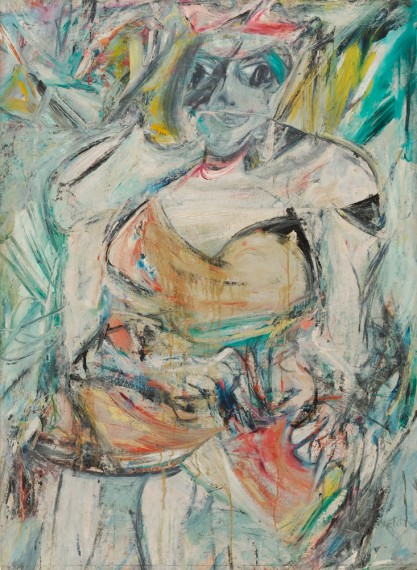 Women, II, in MoMA, part of the Blanchette Hooker Rockefeller Collection, is one of many paintings of women that de Kooning did in the 50s
Women, II, in MoMA, part of the Blanchette Hooker Rockefeller Collection, is one of many paintings of women that de Kooning did in the 50sAnalyzing the radiating diagonals of Hals’ compositions and paint quality, we might wonder if de Kooning ‘s thick, diagonal brushstrokes, sometimes overlapping and transparent, were inspired by Frans Hals’ compositions. Both artists give the viewer a texture we would want to touch.
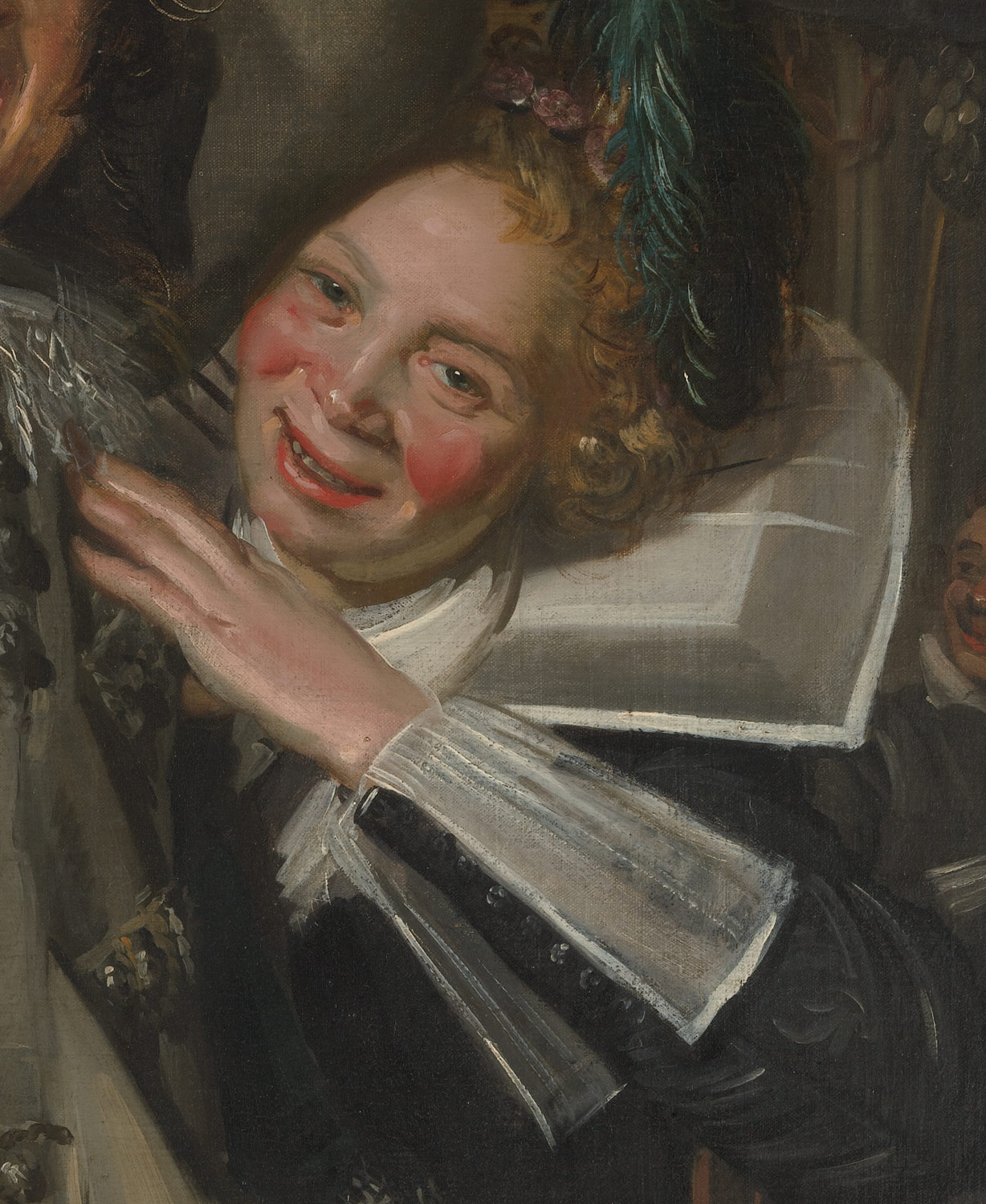 Frans Hals, detail of woman, from Young Man and Woman in an Inn
Frans Hals, detail of woman, from Young Man and Woman in an InnAnd then there is color; in Hals, it’s the beautiful blue sleeve and feathers of the man leaving a bar and the flushed cheeks of a woman grabbing his arm. Hals soaked her cheeks with redness from too much drink, but at a time when artists did not exaggerate color. Perhaps a coincidence, but de Kooning, particularly in paintings of women, dared to make the reds quite strong.
Women, II, shown above, also has a tactile quality to its blues, greens, red and white.
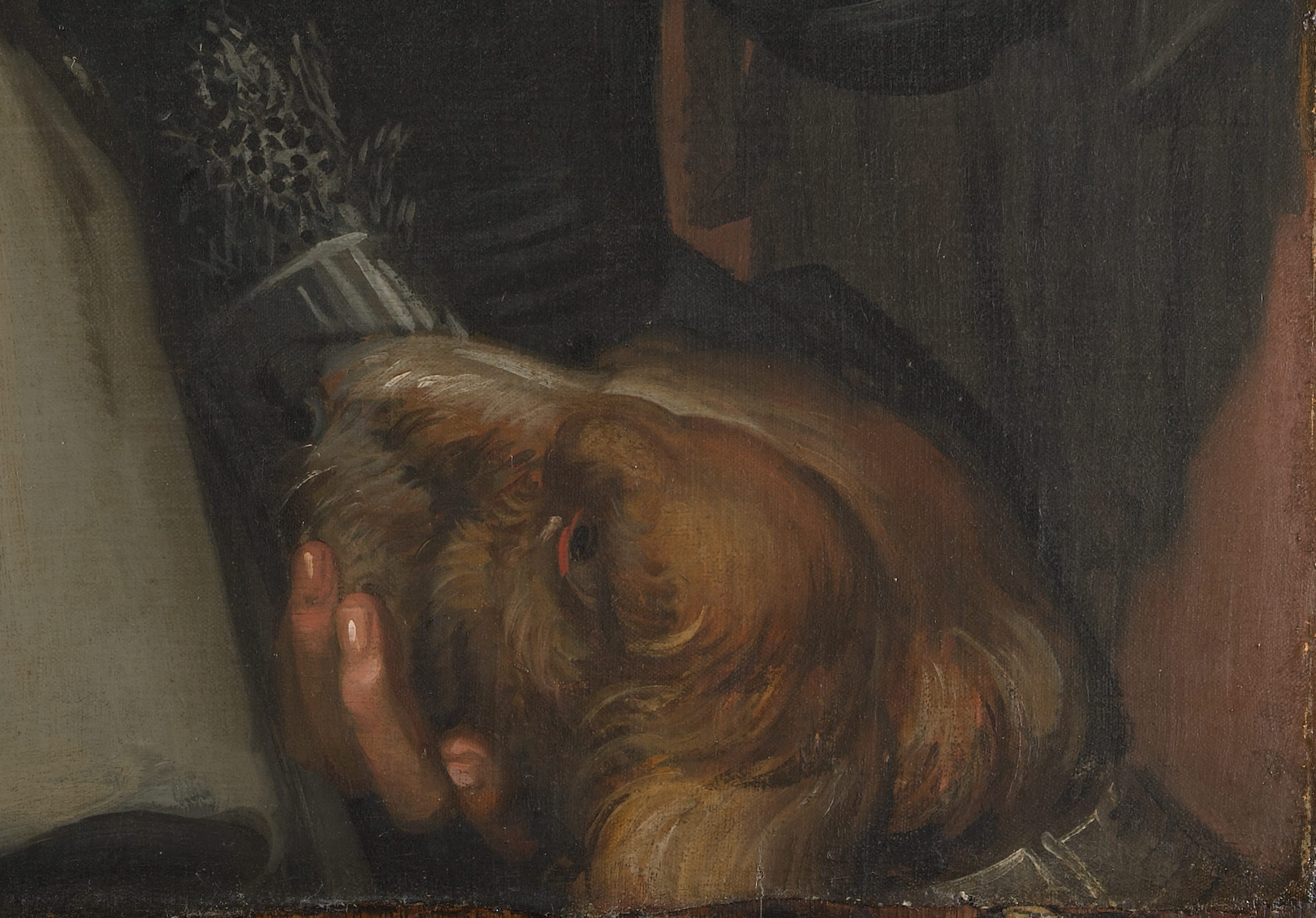 The soft and furry dog is typical of Hals’ ability to paint wonderful, tactile effects
The soft and furry dog is typical of Hals’ ability to paint wonderful, tactile effects In Young Man and Woman at the Inn, we witness Hals’ desire was to create a snapshot of time, a vivid realism that looks fresh and unplanned. He used a close-up view, a foreshortened upper arm and a jump into deeper space. The arm holding a glass pokes out of the picture frame. This view looks spontaneous, as if the couple did not know they’re being caught by the artist. A dog in the lower right hand corner completes Hals’ soft, painterly picture. This Dutch master is known mainly for his portraits.
De Kooning, on the other hand, immigrated to the United States and made his fame with the New York School, the Abstract Expressionists of the mid-20th century. The Met’s show of Frans Hals will end soon, but MoMA’s very large exhibition of de Kooning will continue until January 9.
Copyright Julie Schauer 2010-2016
by Julie Schauer | Jun 8, 2010 | Baroque Art, Ceramics, Sicily

In the hills of central Sicily the Cathedral of Caltagirone–its dome covered with ceramic tiles–is just one the many wonders in this city of colorful tile (Baroque and Art Nouveau buildings, too). Ceramics everywhere…….I resisted the temptation to buy more pottery (my house has enough and there’s no more room), except one small putto, because I can look at these beautiful photos and remember how it felt to be there.

The green pinecone is a prominent symbol in this region. It reminds me of the pineapples in Williamsburg.

A stroll through the local park reveal planters, light fixtures, fences in a variety of colors. The common colors for the tiles are blue, green, yellow and orange, in an endless variety of creative patterns. Figural designs and shapes are thoroughly Italian, especially with the masks, but some geometric designs in the tiles hint of an Arabic background.

Nearby is a ceramics museum. Scalloped arches are an Islamic feature. The town’s name comes from the Arab “kalat” meaning castle and “geron” meanting caves. Arabs or Saracens ruled Sicily from the 9th-11th centuries, contributed much to the local pottery industry before the Normans came. Like so many parts of medieval Sicily, the Arab-Norman genius combined to form a marvelous craftsmanship.
 Then in the 17th an Italian style came on with
Then in the 17th an Italian style came on withstrong force in its Baroque phase, as on the steps below built in 1606.
Thanks to Mark for the photos immediately above and below.
 Each of the 142 steps of the Scala Monte Santa Maria del Monte has a different ceramic tile design. Today ceramic shops line the streets at the foot of the steps, and its a particularly good place to buy dinnerware, or ceramic figurines.
Each of the 142 steps of the Scala Monte Santa Maria del Monte has a different ceramic tile design. Today ceramic shops line the streets at the foot of the steps, and its a particularly good place to buy dinnerware, or ceramic figurines.  Even the Bridge of San Francesco is patterned with Majolica tiles
Even the Bridge of San Francesco is patterned with Majolica tiles
Copyright Julie Schauer 2010-2016
by Julie Schauer | Apr 29, 2010 | Ancient Art, Architecture, Baroque Art, Christianity and the Church, Greek Art, Sicily, The Middle Ages
 The Cathedral of Sircusa (Syracuse), Sicily is built within the colonnades of Greek temple to Athena from the early 5th century BC. Byzantine Christians converted the ruins of it into their Cathedral in the 7th century. The fluted columns are engaged in the outer side wall, along with triglyphs, metopes, etc. (the parts of the Doric Order in Greek architecture). The arched windows and crenelated top date from the Middle Ages. (It even had been a mosque at one time.) However, around the corner, the facade is thoroughly Baroque, built in 1700s! Old and new don’t clash, though — because they aren’t seen simultaneously.
The Cathedral of Sircusa (Syracuse), Sicily is built within the colonnades of Greek temple to Athena from the early 5th century BC. Byzantine Christians converted the ruins of it into their Cathedral in the 7th century. The fluted columns are engaged in the outer side wall, along with triglyphs, metopes, etc. (the parts of the Doric Order in Greek architecture). The arched windows and crenelated top date from the Middle Ages. (It even had been a mosque at one time.) However, around the corner, the facade is thoroughly Baroque, built in 1700s! Old and new don’t clash, though — because they aren’t seen simultaneously.


Behind the door of this
Cathedral’s Baroque
facade, the simplicity of an
actual Doric temple
colonnades are hidden.
The medieval barrel vault comfortably meets
the ancient Greek
colonnade to form
a side aisle.
The temple’s floor plan easily adapts to the
7th century Basilican plan church. The
darkest components of this plan belong
to the original Doric Greek temple.

Copyright Julie Schauer 2010-2016
 Willem de Kooning, Merritt Parkway, 1959, from the Detroit Institute of Art, Bequest of Hawkins Ferry, is in an exhibition at the Museum of Modern Art (called MoMA), New York
Willem de Kooning, Merritt Parkway, 1959, from the Detroit Institute of Art, Bequest of Hawkins Ferry, is in an exhibition at the Museum of Modern Art (called MoMA), New York 















Recent Comments